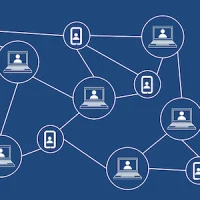Compared to other industries, especially the banking and aviation sectors, healthcare has been slow when it comes to adoption of digital identity.
In the banking industry, passwords and tokens have long been used to provide consumers access to accounts and virtual services. Specifically, a bank card (e.g., a debit or credit card) serves as identification for the financial transaction system.
"Banking has succeeded with this system of digital identity because of its use of identity-proofing and validation. This has proven to be a clean, simple, trusted, and flexible system. Identity theft is a risk but statistically the exception to the rule," says Gus Malezis, president and CEO at Imprivata (Lexington, Mass.), in a recent HFMA blog post.
For him, the banking industry’s version of identification serves as a useful template for healthcare, although some adjustments are necessary.
"In some form or another, healthcare must include identity proofing, and banking has provided a useful model through validation of the relevant state/country legal entity via a passport or driver’s licence. In this vector, multiple layers are preferred and add to the quality of validation," Malezis explains.
In terms of security enhancement, he says, healthcare can use biometrics as an additional vector. Biometrics, with multiple layers, will define the physical biological entity (via iris, palm vein, etc.) as associated to the legal entity. In addition, biometrics can also help clinically.
"Imagine a patient is unable to present his or her name after, for example, an accident that renders the patient unconscious. EMTs and other care providers can use biometrics to identify the patient, accessing medical history and other information such as the patient’s primary care physician," according to Malezis.
He also cites the importance of identity proofing for accreditation of physicians and other care providers. Such identity proofing is necessary because doctors, nurses, and others now are interacting with more than one clinic, or more than one acute care facility.
A comprehensive patient digital identification system will help hospitals to avoid misidentification of patients, which can result in denied medical claims and write-offs – i.e., lost revenues. Patient identification errors could also lead to unnecessary duplicative testing (a physician orders unnecessary orders and testing for the "wrong" patient, for which the hospital won't get paid), costly clean-up of duplicate and overlaid medical records.
Duplicate medical records make up 8 percent of all hospital medical records and are a large source of patient misidentification, costing hospitals up to $1,000 to fix. Overlays are even more complex, costing up to $5,000 to cleanse and unmerge, according to Malezis.
Furthermore, operational efficiencies and financial benefits are realised when comprehensive patient digital identity is applied throughout the workflow of the hospital and care delivery system. "This kind of digitisation has helped the financial and airline industries deliver better service by automating repeatable tasks," he notes.
Source: HFMA
Image Credit: Pixabay
Latest Articles
Healthcare, digital identity, banking models
Compared to other industries, especially the banking and aviation sectors, healthcare has been slow when it comes to adoption of digital identity.










